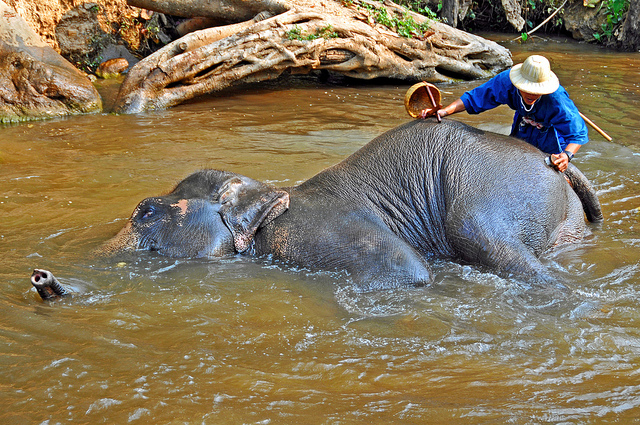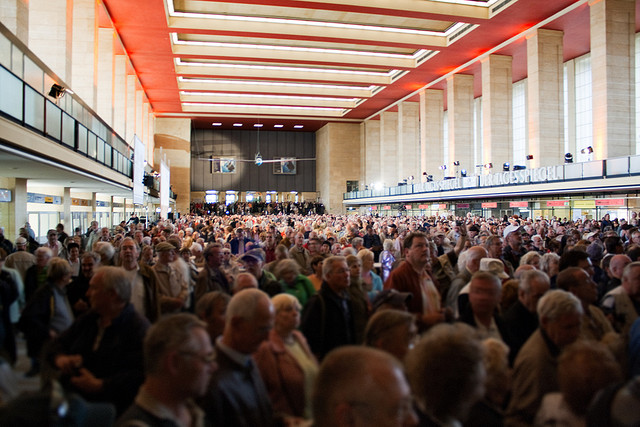Globalization can be defined in several ways. One broad definition is:
“A complex web of social processes that intensify and expand worldwide economic, cultural, political and technological exchanges and connections.”
Globalization can also be simply described as the movement of goods, ideas, values, and people around the world. The term was first used in the early 1950s to recognize the increasing interdependence of economies and societies around the world. Globalization, however, has existed for centuries by way of evolving trade routes, including the slave trade, colonization, and immigration.
Today, we are divided into separate countries, each looking out for its own national self-interest. At the same time, other entities such as multinational corporations cross borders, which leads to global economic and political integration. Many benefits can result from global integration and interdependence, but we also need to heed its negative effects.
We shall explore the topic of globalization and how it relates to tourism, and then examines trends that have arisen as a result.
The Impact of Globalization on Tourism
We can assess the impact of globalization on tourism from a number of perspectives. Here, we will discuss five examples: global mobility and ease of travel; population and demographic trends; terrorism, safety, and security; increased awareness of new destinations; and poverty.
Global Mobility and Ease of Travel
The advances made in transportation that have enabled global mobility are particularly significant. Modern aircraft, cruise ships, trains, and other modes of transport allow people to move quickly and relatively cheaply. Aircraft such as the Boeing 787 Dreamliner have opened new routes by creating an aircraft capable of flying “long haul” distances with a larger passenger load. Fast trains, road systems, and even city bike rental programs enable people to move, tour, and explore the world. These changes have allowed more people to travel more often in less time.
Ease of travel has also helped to overcome the barriers of fear, frustration, and expense. For example, an international banking system allows access to money almost anywhere in the world. Multinational corporations, which provide flights, local transportation, and accommodation and food, have allowed for “one-stop shopping” for travel bookings. Handheld devices have also changed the nature of travel in terms of what travellers do and how they interact with a destination, making it easier to, for example, select a restaurant, navigate a big city, or translate a foreign language. As a result, there are fewer unexplored places in the world anymore.
Population and Demographic Trends
According to the United Nations Population Fund (2015), the world population reached 7 billion in 2011 and is projected to exceed 9 billion by 2050. The population continues to increase, but not uniformly across the world. Birth and death rates are vastly different between developed and developing nations (Population Reference Bureau, 2013). In the developed world, there are more older citizens (over 60 years old) than there are children (under 14). This ratio, which first tilted in favour of older people in the late 1990s, is increasing (Business Insider, 2014). In contrast, in the developing world, this is not expected to occur until the middle of this century. This demographic divide is expected to widen between the richer and poorer countries of the world in the near future before possibly trending together in 40 or 50 years.
Other critical population trends affecting global development and tourism include the following (UNPF, 2015; World Tourism Organization, 2010; York, 2014):
- There are approximately 1.8 billion young people in the world (between 10 and 24 years), which is the largest that this group has ever been. They have tremendous opportunity for economic and social progress, resulting in a “youth dividend” for countries that embrace this demographic and their youthful vitality. This group is also travelling more than ever before in history.
- By the end of this century, approximately 40% of the world’s population is expected to be African. While birth rates are tending to fall around the world, they are still higher across Africa than in most other parts of the globe. This could result in a youth dividend or further exacerbate problems on the African continent.
- More people are migrating than ever before, with 232 million recent migrants compared with about 175 million in 2000. The top five destinations are the United States, the Russian Federation, Germany, Saudi Arabia, and the United Arab Emirates.
- More than half of the global population is urban, and the urbanization trend is expected to continue as people search for more jobs, more services, and more activities. Not everyone benefits equally though, as housing and other infrastructure struggles to keep up with the growing urban population.
To keep up with all of these changes in demographics, destinations will need to provide products and services to suit the older, culturally diverse, multi-generational travellers as well as the adventurous youth. Additionally, hiring and retaining staff will require a rethinking of human resource policies and procedures, compensation, and other aspects for the changing population of employees.
Terrorism, Safety, and Security
Terrorist attacks and political unrest globally have certainly disrupted tourism, but not halted it. The areas most affected, of course, are those where unrest has occurred and has been the focus of extensive media attention. A global terrorism index produced by the Vision of Humanity organization shows a fivefold increase in terrorist fatalities since 9/11 (MacAskill, 2014). The Islamic State (ISIS), Boko Haram, the Taliban, and al-Qaida are groups responsible for many of the 18,000 terrorism-related deaths in 2013, which represented an increase of 60% over the previous year.
While safety and security may not be the driving reasons for tourists selecting a particular destination, certainly a lack of safety and security often eliminates a location from travellers’ “wish lists.”
Safety and security for travellers is becoming more important as countries move to protect their citizens. Government agencies around the world produce advisories and warnings for their citizens to stay away from dangerous locations and political unrest.
Take a Closer Look: Travel Advisories
Travel advisories serve as warning systems for people from specific countries to avoid particular destinations because of actual or potential threats to citizens.The focus on safety and security has had several impacts on travellers. Most notably, security at most airports has been increased in an effort to protect people and planes (Flight Global, 2015). Screening procedures can take longer and some items are no longer allowed on board. Other security requirements, such as showing passports and providing fingerprints, have been implemented for entry into some countries. While all acts of terrorism cannot be stopped, the tourism industry is attempting to provide as much safety and security as it can.
Increased Awareness of New Destinations
Another influence of globalization on tourism is a greater awareness of destinations and the range of leisure activities, sites, and cultures to visit around the world. Generating knowledge of a destination is obviously a key first step in marketing a destination, and this is achieved by way of travel shows, films, blogs, and other forms of communication. The competition to attract visitors is fierce considering the sheer number of places available for travel; it can be easy to get lost in the noise of global competition.
Poverty
Globalization has contributed to increased demand for goods and services and overall economic growth, with the result of global poverty having decreased over the years. However, at the same time, the gap between the richest and poorest has expanded. A significant portion of the world’s population is simply unable to participate in, or benefit from, tourism. The economic gains from a tourism economy in a developing country such as Honduras versus a developed country such as Canada is unequal. Simply put, not everyone has the same opportunities to profit. Environmental costs are also unevenly distributed in the world, with poor countries lacking the resources to adapt to impacts (such as droughts, increased disease, soil erosion), and shouldering the majority of the repercussions of phenomena such as global warming.
Another way to analyze the interplay between tourism and globalization is to consider the reverse view: the impact of tourism on globalization.
Impact of Tourism on Globalization
In this section, we will look at tourism as a global force — for peace, for cultural homogenization, for commodifying cultures, and for shaping the way we see the world.
Tourism as a Force for Peace
In the 1980s, a popular hypothesis was that tourism supported global peace by allowing travellers to learn about other cultures and meet people from other nations, as well as offering benefits accrued from international business. Peace is an obvious requirement for tourism if the industry is to be robust and sustainable. However, to date, there is little empirical evidence to support the claim that tourism fosters peace, however attractive as the idea may be.
Tourism as Cultural Homogenizer
Nevertheless, tourism does offer the opportunity to teach people about how to respect other cultures. Some argue that globalization has a homogenizing effect on cultures, as Western values are spread through music, fashion, film, and food, rendering one culture indistinguishable from the next.
Some beliefs and values, such as embracing equality and diversity, or the need to protect children from harm, should be shared around the world. In the context of tourism and travel, these two issues are significant. For instance, companies need to ensure that their human resource practices are consistent and fair throughout the world. Exploiting children for sex is illegal, punishable in both the country visited and the home country of the tourist; some airlines and hotels are actively involved in supporting the prohibition of child sex tourism. Travellers are expected not to deface heritage sites or take rare or endangered natural or cultural objects as souvenirs. Such regulations speak to the universality of certain values and beliefs, which we all are required to follow as global citizens.
Tourism as Commodifier
Another possible influence of tourism on globalization is the process of cultural commodification, which refers to the drive toward putting a monetary value on every aspect of culture, from buying a sculpture stolen from an ancient temple, to buying endangered objects such as ivory and coral. This trend results in the degradation or devaluing of cultural values and beliefs.
As one of the world’s largest industries, tourism impacts local, regional, and global economies. Resorts dot coastlines around the world and offer a welcome respite from colder climates to anyone wishing to experience a tropical beach, as well as the local culture and nature. While benefit comes to the community in the form of jobs, more often than not the larger share of the wealth leaks offshore. In response, local entrepreneurs and aid organizations have helped with initiatives that embrace local ownership in order for the wealth generated from tourism to stay in country. Community-based tourism, responsible tourism, and social entrepreneurship all aim to bring greater benefit to local communities.
Tourism As a World View
Tourism is also a major influence in how we see and understand the world. Keith Hollinshead (2006) refers to it as tourism world-making, or the way in which a place or culture is marketed and/or presented to tourists. Unlike local people, travellers experience a place for a few days, with limited knowledge of the culture and local way of life. Some visitors rely on available tourist information to make the most of the experience and to see the highlights. Others turn away and attempt to “go local” in search of the authentic experience with the belief that they can truly understand a place by avoiding the tourist sites.
If tourists stay in their resort in a given country, their only interaction with a local culture may be the staff at the hotel. In many cases, visitors experience a place in a fragmented, disconnected way, seeing only a portion of a place. How much can be gained from such short and transient experiences? This debate leads to one of the often discussed, if not hotly debated, topics in tourism, that of authenticity of experience. In 1976, Dean MacCannell released his book The Tourist: A New Theory of the Leisure Class, in which he argued that even those events that seem to be authentic are in some way staged for the visitor (Drumond, 2013).
Take a Closer Look: Cannibal Tours
In 1988, Dean O’Rourke shot a documentary profiling the experiences of jet-set travellers as they encountered locals in Papua New Guinea. The movie highlights the challenges that happen when visitors meet with “the other,” in that their expectations shape the behaviours of the locals. The movie features interviews with the locals as well as tourists. To watch the movie, visit https://www.youtube.com/watch?v=SQiDufdir_M
Environmental Trends
The United Nations Intergovernmental Panel on Climate Change has produced irrefutable evidence that climate change is human-made. We are already witnessing significant shifts in weather patterns, and climatic events such as tornadoes, drought, and flooding are occurring with greater frequency and impact. Yet dependence on a global economy fuelled by population growth and ever-increasing demand for consumer goods has led to significant debate as to how to respond to climate change, although action is clearly required.
Environmental Impacts
From a tourism and travel perspective, we have seen examples of how climate change is impacting tourism. In the transportation sector, drastic temperature changes from sudden ice thaws to heatwave conditions affect highways and runways, landslides close road systems, and rising sea levels threaten infrastructure such as airports and cruise ship wharves. In the accommodations sector, coastal storms impact resorts, summer water shortages put pressure on resort communities, and unpredictable snowfalls close ski resorts. Food and beverage operators are facing increased food costs as drought conditions make growing certain crops more and more expensive. In the recreation and entertainment sector, both natural and built attractions are threatened by unpredictable weather patterns. And travel services providers struggle to stay abreast of the effects of superstorms and polar vortexes.
The question here is the extent to which we can globally respond to these impacts by adapting and mitigating climate change to foster more resilient forms of economic growth, of which tourism is a part. Does this mean less air travel? Possibly. The challenge for tourism is that our economic interdependence requires far-reaching transportation routes, be it by air, sea, or land.
Economic Trends
Like most other industrial sectors, tourism is affected by global economic trends. Tourism was initially negatively impacted after the global financial crisis of 2007-2008, with international tourism arrivals dropping globally. However, the industry was quick to rebound, with the number of travellers increasing by 2010, surpassing the 1 billion mark in 2012 (UNWTO, 2014).
Economic uncertainties for the tourism industry have persisted, however, leading many industry insiders to monitor several economic trends, including collaborative consumption, shifts in emerging economies, and conscious consumerism.
Collaborative Consumption
Although the phenomenon of collaborative consumption, also known as the sharing economy, began before the global financial crisis, it gained strength as a result of it. Collaborative consumption is a blend of economy, technology, and a social movement where access to goods and skills is more important than ownership.
Airbnb was one of the first, and arguably most well known, examples of the tourism sharing marketplace, but several other companies have joined it, including Zipcar, Uber, and Couchsurfing. According to Nielsen, more than two-thirds of global respondents to a poll are interested in joining this revolution. The impacts on the tourism industry are still to be determined, although young travellers, budget-conscious families, and tourists seeking authentic local experiences seem to be drawn to these services. This is one trend that is likely to persist for some time into the future.
Emerging Economies
In 2001, a new acronym was introduced into the economic world — BRIC. This refers to the growing economies of Brazil, Russia, India, and China (Northam, 2014). These turbo-charged emerging economies were growing fast and looking to be the new powerhouses in global economic circles, even forming political and economic alliances. South Africa joined the group in 2010 and they became known as the BRICS.
With this growth came travellers looking for new destinations to visit. Outbound tourism development from China has been especially energetic, with numbers increasing from 58 million in 2010 to almost 100 million in 2013 (Flannery, 2014). But all has not gone well for these emerging economies and only China has maintained the pace of expansion. Other countries have since joined the race, creating another new acronym — MINTS — for the countries of Mexico, Indonesia, Nigeria, Turkey, and South Korea. Time will tell where new tourism growth and opportunities arise in the frenetic global economy, and who will be the next powerhouse to watch.
Conscious Consumerism
Conscious consumerism, or socially conscious consumer behaviour, is another economic trend with implications for the tourism industry. This term refers to consumers who are using their purchasing power to shape the world according to their values and beliefs, leading organizations to project a more ethical or responsible image.
This socially and environmentally responsible purchasing by many consumers (Freestone & McGoldrick, 2008) can direct travellers to more sustainable services and products. Destinations and businesses interested in pursuing this market need to be acutely aware of social and environmental issues, potentially ranging from organic produce and animal welfare to human rights (Shaw, Grehan, Shiu, Hassan, & Thomson, 2005). Some of the key principles for consideration by the tourism industry include an assumption that the traditional industrial model is not working and needs to be replaced, that awareness of the issues require a different mindset, and that change will come from the grassroots rather than from above (Pollack, 2012). This is a shift that has profitability and culture change firmly in its sights (Nielsen, 2014b).
Cultural and Social Trends
Defining culture as “a way of life” brings us to consider the implications of globalization as a defining influence in how we live and, therefore, who we are as individuals. Some argue that globalization has created a culture crisis, with values, beliefs, and identity all made secondary to economic interests and the pervasive and ever-growing nature of technology in our lives. Below are three cultural trends, followed by two societal trends.
The Tourist Experience as the Good Life
Some people are motivated to travel as a form of escape from the pressures of the globally interconnected world. Unplugging, where a hotel or resort offers no technological access in the form of Wi-Fi, television, or phones, is certainly one way to get people to slow down and, perhaps ironically, reconnect with themselves and loved ones. Biking, walking, small sailboat cruises, rural tourism, as well as the slow food movement are examples of experiences that simplify life in order to better appreciate and enjoy it.
Travel as a Time to Bond
Visiting friends and relatives, known in the industry simply as VFR, is a common and important subset of tourism demand worldwide. With their busy lives, people are seeking a moment, place, and activity to share with family or friends. In addition to the growing VFR trend is the increasing popularity of group travel, as exemplified in the sports tourism sector with sports clubs and teams who travel together, and associations that bring together people with shared interests in cuisine, walking, birdwatching, or other avocations.
Global Migration
Certainly a trend in globalization is the significant movement of people around the world. Implications for the tourism industry include a growing need to address the challenges of a multicultural workforce, including preconceptions related to customer service and management. It’s important for diverse teams to be able to work well together and to communicate well with visitors and guests.
Technology
For many years, technology has been strongly tied to tourism as the industry has looked to take advantage of developments and changes, opening destinations and providing new products and services. From the early days of Thomas Cook’s first recognized tours, offering train rides to the seaside, to the adoption of mobile technology today, tourism and hospitality has incorporated technological advances into all aspects of the industry. Two key technology trends affecting tourism and hospitality today and into the foreseeable future are mobile technology and access.
Wireless Ways
Mobile technology and wireless connections affect many aspects of the tourism industry on a global scale. Mobile technology allows people increased freedom to negotiate their day-to-day lives while staying connected. Online user-generated content, whether through social media (e.g., Facebook, Snapchat) or travel-rating sites (e.g., TripAdvisor, Zagat), is shaping where people go, where they stay and eat, and the types of activities they engage in.
Smartphones and applications (or apps) provide access to information and the ability for tourists to shape their travel en route, affecting tourism travel decisions and behaviours in a more fluid way than ever before. Travellers can book hotels instantly, searching for the best deals available. Mobile apps are replacing the hotel concierge by providing up-to-date information, along with maps and directions, for many of the desired activities at destinations.
Wireless technology has also given rise to location-based advertising, allowing product or service providers to market themselves when travellers are in the general area. Attraction alerts and special offers, often triggered by applications, provoke the user’s attention to elicit an immediate response.
Internet access has become a standard requirement for accommodations, ahead of other amenities such as in-house restaurants or pools. The importance of mobile technology and applications is expected to increase as travellers become more independent and less reliant on packaged options. Proponents of technology suggest that traditional ways of providing tourism and hospitality information will disappear as mobile technology becomes even more prevalent.
Advancing Access
Technological advances in transportation are affecting not only how people travel to and within destinations, but also the impacts that those forms of transportation are having on the environment. Transportation is one of the largest consumers of fossil fuels, and tourism is one of the biggest contributors to that consumption; consequently the tourism industry is taking steps to improve sustainability and reduce impacts. For example, newer planes, such as the Boeing 787 Dreamliner, use less fuel, generate less noise, and produce fewer emissions than previous models. Efforts are also being made to offer alternatives for tourism transportation (World Economic Forum, 2011), including increases in the number of electric cars available through rental agencies.
Transportation advances are also opening more access to the world for more people. In adjusted dollars, the cost of flights per mile has fallen by about 50% in the past 30 years (Thompson, 2013), allowing more people to travel. There are now even new vehicles for outer space that have created opportunities for people to begin to explore “the last frontier.” The cost of these flights is still prohibitively expensive for most people (approximately $20 million), but with continued advances in technology, this futuristic travel could eventually become commonplace.
___________________________________________________
About the Authors
This edited article was written by Geoffrey Bird and Eugene Thomlinson as part of their contribution on the “Introduction to Tourism & Hospitality in BC” of the B.C. Open Textbook Project. The B.C. Open Textbook project began in 2012 with the goal of making post-secondary education more accessible by reducing student cost through the use of openly licensed textbooks. This is an amazing initiative that is worthwhile to check out. Read more.


































